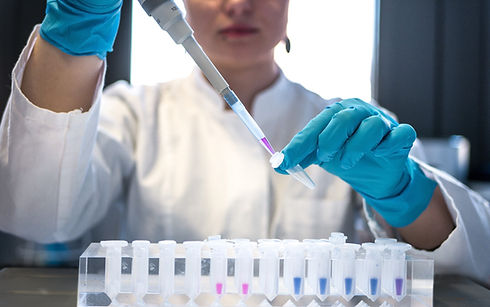
WHAT ARE STEM CELLS?
WHAT ARE STEM CELLS? AN INTRODUCTION TO REGENERATIVE POTENTIAL
Stem cells are cells with the remarkable ability to develop into many different cell types, from muscle cells to brain cells. This unique characteristic makes them invaluable in the field of regenerative medicine and holds immense potential for treating a wide array of diseases and injuries.

UNDERSTANDING THE FUNDAMENTALS OF STEM CELL BIOLOGY
At their core, stem cells are undifferentiated cells capable of both self-renewal and differentiation. Self-renewal means they can replicate themselves, creating more stem cells. Differentiation is the process by which they transform into specialized cells with specific functions. This process is crucial for tissue repair, growth, and development
HOW DO THEY WORK?
Their potential to treat a number of ailments is getting increasingly evident. This lies in their extremely flexible nature, because of which they can effortlessly divide and renew themselves, and take the form of a desired tissue or cell. Following are some of the unique properties of stem cells, that may make them ideal for treating a number of approved disorders:
-
Plasticity: Stem cells can use one tissue and create cell types of entirely different tissues.
-
Homing: They have a unique ability to get attracted to the site of injury.
-
Engraftment: This property helps them to unite with the new tissue, thus regenerating tissue to integrate with the parent tissue smoothly.
TYPES OF STEM CELLS
Stem cells are categorised based on their potency and origin:
-
Embryonic Stem Cells (ESCs): Derived from early embryos, ESCs are pluripotent, meaning they can differentiate into any cell type in the body. However, their use raises ethical considerations.
-
Adult Stem Cells (Somatic Stem Cells): Found in various tissues, these stem cells are multipotent or unipotent, meaning they can differentiate into a limited range of cell types. Examples include hematopoietic stem cells (HSCs) and mesenchymal stem cells (MSCs).
-
Pluripotent stem cells (PSC): These are stem cell that have the characteristics of both Hematopoietic & Mesenchymal cells. Thus, they are capable of differentiating into all types tissues in the body.
-
Induced Pluripotent Stem Cells (iPSCs): Adult cells reprogrammed to behave like embryonic stem cells, offering a promising avenue for research and therapy.
-
Hematopoietic Stem Cells (HSCs): Primarily found in bone marrow and cord blood, HSCs are responsible for generating all blood cell types, including red blood cells, white blood cells, and platelets.
-
Mesenchymal Stem Cells (MSCs): Found in various tissues, including bone marrow, adipose tissue, and the placenta, MSCs have the potential to differentiate into bone, cartilage, muscle, and fat cells.
THE ROLE OF STEM CELLS IN REGENERATIVE MEDICINE
Stem cells hold immense potential for treating a range of diseases and injuries. They can be used to:
-
Repair damaged tissues and organs.
-
Replace cells lost due to disease or injury.
-
Treat blood disorders, such as leukemia and lymphoma.
-
Develop new therapies for neurological conditions, like Parkinson's disease and Alzheimer's disease.
-
Treat injuries such as spinal cord injuries.
-
Current research focuses on using stem cells to treat heart disease, diabetes, and autoimmune diseases.
STEM CELL RESEARCH AND ADVANCEMENTS
The field of stem cell research is rapidly evolving. Scientists are exploring new ways to:
-
Improve stem cell transplantation techniques.
-
Develop new stem cell-based therapies.
-
Understand the mechanisms of stem cell differentiation.
-
Use stem cells to grow organs.
-
Clinical trials are underway to test the safety and efficacy of stem cell therapies for various conditions.
MORE THAN JUST BANKING
At ReeLabs, we don't just stop at banking. Our scientists have worked diligently for the past five years to develop protocols which harness the true potential of stem cells. Find out why you should bank with us and learn why so many parents prefer ReeLabs when it comes to stem cell banking. Read more about our story.

